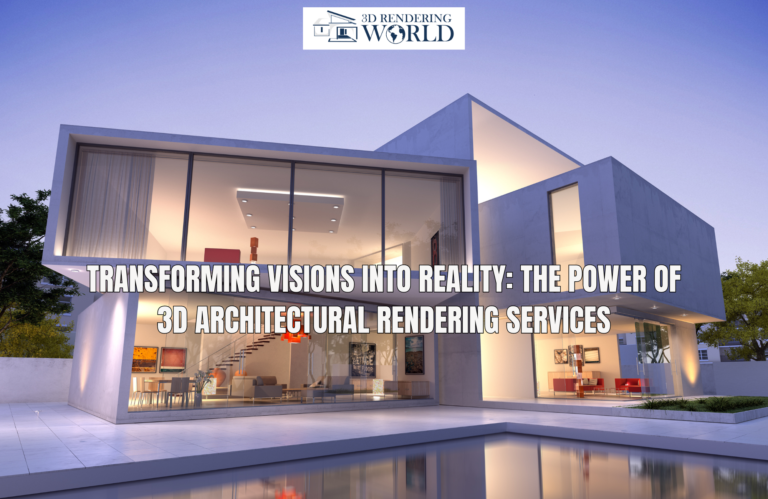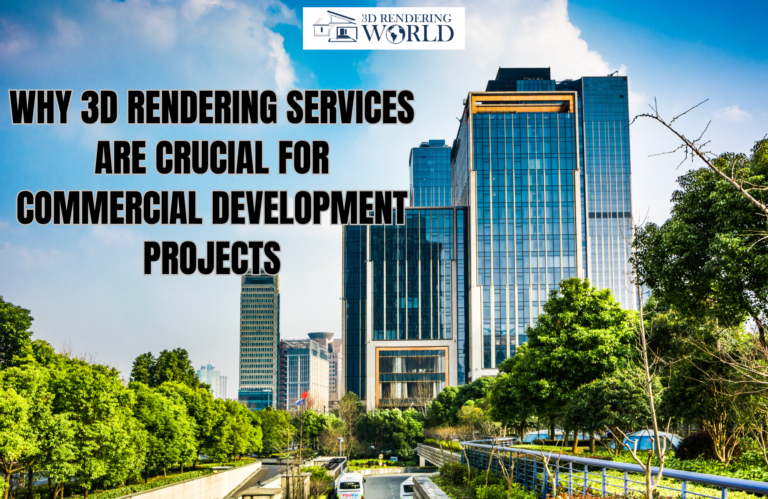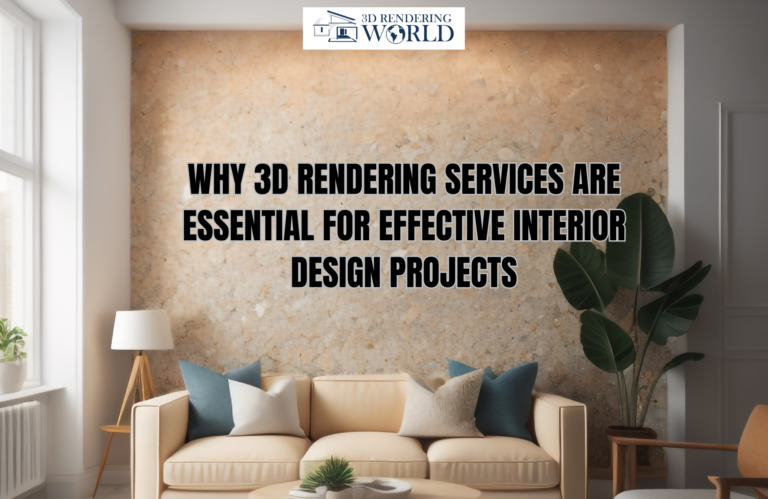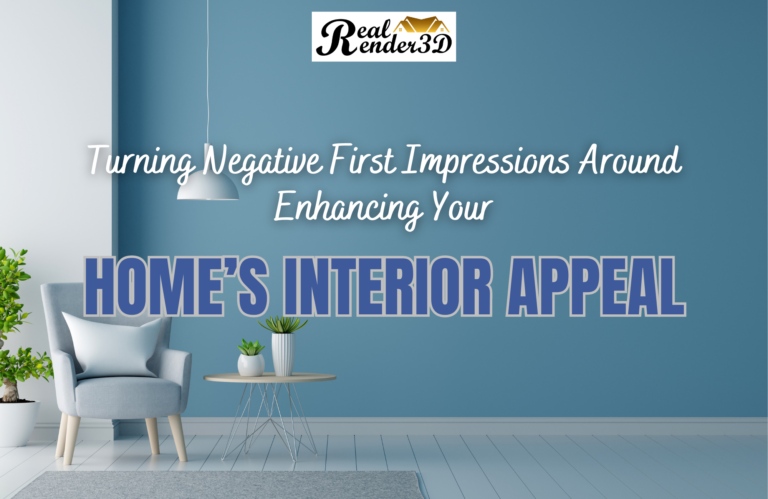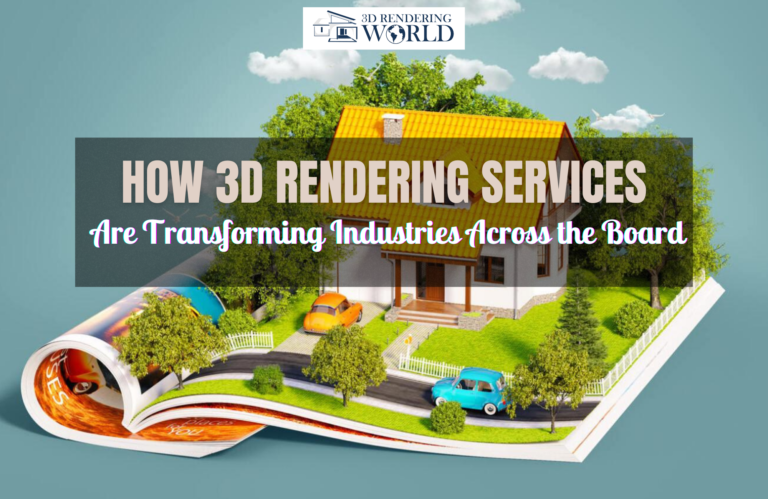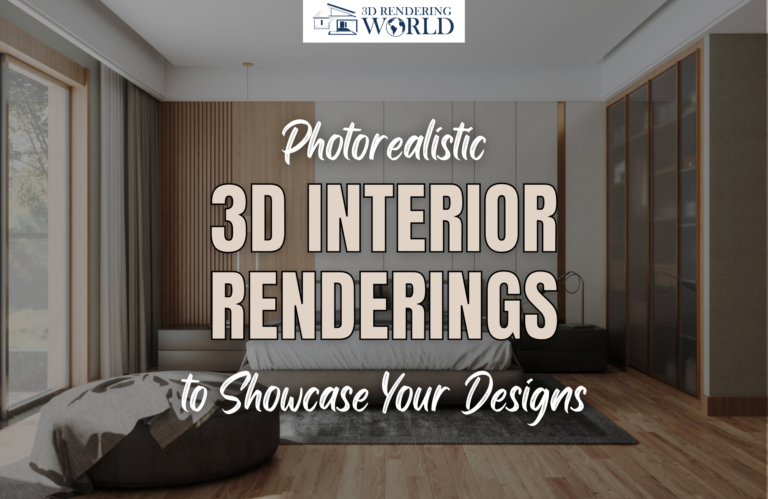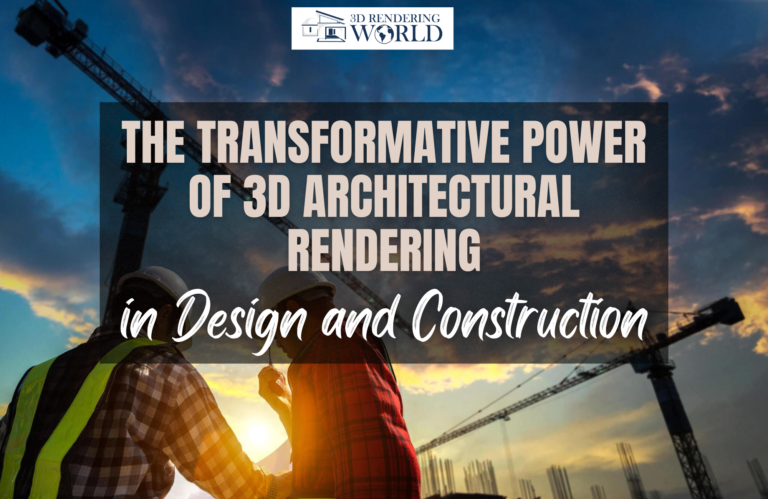Introduction
If you’re looking to bring your architectural, interior design project to life through stunning 3D visualizations, partnering with the right 3D rendering company is key. With so many options to choose from, how do you ensure you make the best decision for your specific needs? This ultimate guide covers everything you need to know about evaluating and selecting the perfect 3D rendering services for your upcoming project.
Understanding the Different Types of 3D Rendering
The world of 3D rendering is vast, with services tailored to diverse industries and applications. Before starting your search, it’s important to understand the main rendering types available:
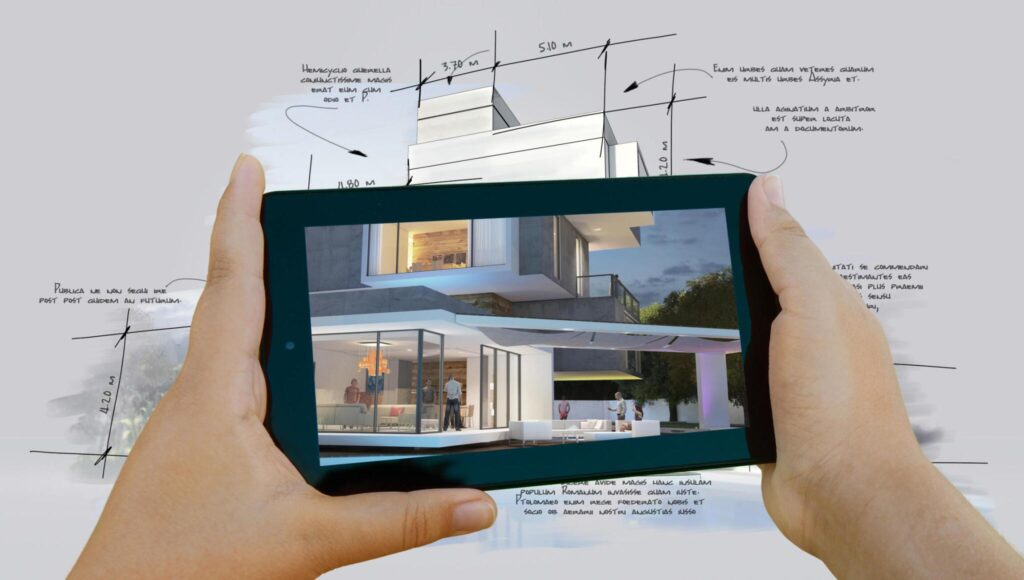
Architects, engineers, and property developers rely on architectural visualization services to create lifelike visual representations of buildings, interiors, and landscapes. This aids planning, design review, marketing, and more. Popular architectural rendering techniques include still imagery, 360° panoramas, CGI walkthroughs, VR, and 3D floor plans.
Interior Design Rendering
Interior designers use 3D rendering to visualize their space planning and design concepts for presentation to clients. Photorealistic details enable clients to imagine the finished result more easily. Renderings can showcase furniture, lighting, décor elements, materials, and more.
Assessing Your 3D Rendering Needs

Now that you understand the different rendering types available, reflect on your specific project requirements. Consider factors like:
Project scope – How many scenes/views do you need to be rendered? Are animations required?
Level of realism – Low realism with basic colors/shading or high realism with precise materials, lighting, reflections, etc.
Rendering techniques – Still 3D images, panoramas, animations, VR experience, etc.
Rendering style – Photorealistic or artistic/conceptual?
Purpose – Marketing visuals, design review and iterations, client presentations, education, training, or other aims?
Budget – What level of investment do you have for 3D rendering services?
Timeframe – What is your required turnaround time?
Property marketing renders – Do you need exterior or interior renderings optimized specifically for real estate marketing?
Clarifying these factors will help you seek proposals from companies that suit your goals. Share examples of the visual style, quality level, scene complexity, and purpose you have in mind.

With a clear understanding of your needs established, it’s time to find the perfect partner to bring your rendering vision to fruition. Here are key considerations as you compare potential firms:
Relevant Experience
Look at a company’s past rendering portfolio and client reviews. Do they have extensive expertise suited to your particular industry and visualization goals? Architectural visualization firms won’t necessarily produce the best product renders, for example.
Range of Services
Some companies offer a full suite of 3D rendering and design services, while others specialize in select offerings. Choose a firm that provides the precise services you’re seeking – whether it’s architectural visualization, interior design rendering, product CGI, 3D floor plans, VR, animation, and more.
Quality and Realism
Assess the quality and realism of their past rendering work. The best firms produce stunning, photoreal visuals – but quality levels vary. It comes down to aspects like materials, lighting, reflections, details, and overall image resolution.
Renders Optimized for Your Purpose
Whether it’s marketing visuals, client presentations, education, or other aims, the renderings should achieve your purpose effectively. Marketing renders for real estate require different optimization than renders for product design review, for instance.
Industry Knowledge
Look for in-depth knowledge of your specific industry. Familiarity with common design elements, visual styles, techniques, and workflows will ensure an efficient, optimized process.
Communication and Collaboration
The company should collaborate closely with you throughout the process – interpreting your vision accurately, communicating progress, incorporating feedback, and ensuring complete satisfaction.
Professionalism and Reliability
From the initial quote through the final delivery, interactions should be professional, smooth, and timely. Reliable project management and adherence to timelines are vital.
Technology and Techniques
Look for firms utilizing the latest, most advanced 3D software and workflows. This ensures efficiency, speed, and maximum visual impact.
Pricing and Value
Balance project budget with visual quality – though cost shouldn’t be the only driver. A budget-friendly quote for basic renders won’t necessarily meet your needs. Compare price to expected value/quality.
Streamline the Selection Process

With so many aspects to consider, having a systematic approach makes finding the right match far simpler. Follow these steps:
- Define project scope, purpose, and required services
- Research suitable companies and review portfolios
- Shortlist top contenders and request custom proposals
- Compare pricing and timeframes
- Ask for references and examples from past similar projects
- Review contract and terms
- Confirm ability to meet expectations and quality standards
Investing the time upfront to find the perfect rendering partner pays dividends in the long run through stunning visuals, smooth collaboration, and seamless results.
Maximizing Satisfaction with Your Chosen Company
Once you’ve selected your preferred 3D rendering firm, a few tips will ensure an exceptional experience:
Provide Clear Briefing and Expectations
Communicate all details and preferences upfront so the team understands your exact goals. Guide overall visual style, level of realism, project purpose, key scenes, preferred techniques, and other specifications.
Give Relevant Reference Material
For accuracy, share useful reference materials like concept drawings, photos, color palettes, design plans, branding assets, or product specs.
Collaborate Throughout the Process
Stay involved and provide timely feedback during the rendering process. This allows the company to tweak approaches as required to meet your vision.
Share Feedback Constructively

Frame notes professionally and positively to help the team refine renders until they’re perfect. Be specific regarding aspects needing adjustment.
Optimize File Formats for Your Needs
Request final 3D rendering files in formats optimized for your intended applications, like high-res JPGs, PNGs, TIFFs, PSDs, or MP4s.
Meet Payment Obligations
Stay on top of project payments so the schedule proceeds smoothly. Renders are typically billed monthly, upon milestones, or upon delivery.
Get Started with Your Dream Renders!
We hope this guide provides valuable insights into choosing the ideal 3D rendering services for your architectural, interior design, or marketing project! With an understanding of key considerations, assessment criteria, and decision factors, you’re equipped to pick the perfect visualization partner. Soon your visions will become photorealistic 3D renders that exceed your expectations. Just follow the tips above to streamline the selection process, collaborate seamlessly, and bring your creative concepts to life through next-level visual storytelling. Let us know if we can help bring your project into clearer focus!
Frequently Asked Questions
Understanding the different types of 3D rendering services available is important because it allows you to assess which option best suits your specific project needs and goals. Architectural visualization has different aims than product rendering, for instance. Matching your project to the right rendering approach ensures you get optimal results.
Taking time upfront to clarify details like required realism level, scenes, purpose, timeline, budget etc. ensures you can find a 3D rendering firm equipped to meet your exact visualization requirements. Conveying your needs and expectations clearly also facilitates more accurate project scoping and quoting.
Opting for a rendering company with extensive experience suited to your industry and project goals helps ensure they can deliver quality results optimized for your specific aims. An architectural visualization studio will be better equipped for building renders than a firm focused on product CGI, for example.
Looking at previous rendering samples from potential companies allows you to gauge their skill level and assess if their quality and realism standards align with your vision. Evaluating their portfolio gives insight into their expertise that company descriptions alone cannot.
Clear communication between you and the rendering firm throughout the project enables the team to fully capture your vision, incorporate feedback iteratively, and refine the visuals until you're completely satisfied. Strong collaboration is key to creating renders tailored to your goals.
Having the final rendered files supplied in formats optimized for your specific applications - like websites, presentations, VR, animations, etc. - ensures they integrate seamlessly into your required uses and have a maximum visual impact as intended.
Giving clear, constructive feedback and notes focused on specific elements that need adjustment helps the rendering team refine the visuals to your preferences. Likewise, providing detailed initial instructions ensures the firm understands your exact goals from the outset. This facilitates results tailored to your vision.


